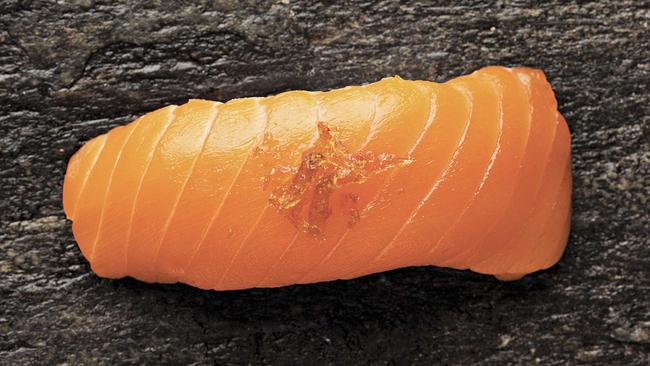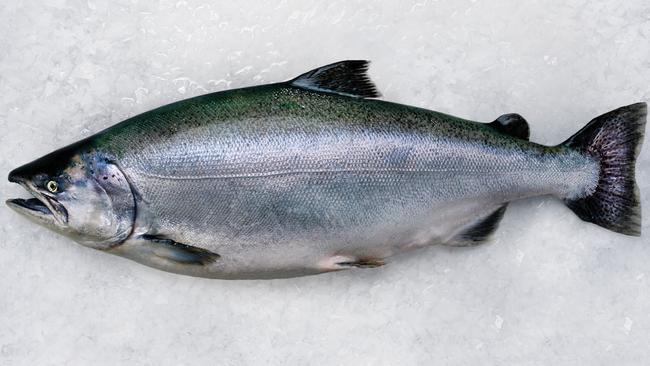Mt Cook Alpine Salmon supplies a ‘free range’ type of fish
In fast-flowing spring water high up on New Zealand’s South Island, an exceptional ‘free-range’ salmon is being farmed.

I’m finding it hard to concentrate. I’m in the back seat of a four-wheel drive as it hugs the tarmac around Lake Tekapo in the deep south of New Zealand’s South Island.
I’m trying to interview Te Tane Trinick about Mt Cook Alpine Salmon but I’m distracted. No, mesmerised.
Trinick, known colloquially as ‘‘the chief’’, is the voice of one of the most fascinating aquaculture fisheries on the planet. He’s young, ambitious, shy even, but his relaxed persona is akin to seeing an old friend again. Like a big Maori embrace.
As Trinick articulates something about ‘‘purest water on earth’’, the words simply blur into oblivion as my eyes steal strength from all my senses to bear witness to possibly the most stunning natural environment I’ve experienced. It’s so fantastical you’d swear it had been Photoshopped.
As the ice caps at the top of the surrounding alps melt during the warmer months, crystal-clear glacier-fed water filters down into the lake below. It’s a glistening mass of gentle teal rippling into rows of monolithic mountains like wispy brushstrokes. The air breathes like pure oxygen. It’s nature, showing off.
“I’m sorry Te Tane, could you say that again?” I ask the chief.
“It’s drinkable from the top and the bottom of the farm,” says Trinick, “It passes New Zealand drinking water standards above and below every time. Even with the fish in it,” he says.
It’s this fresh, pure water — gravity-fed from the glaciers into New Zealand’s highest lake (710m above sea level) — that the Mt Cook Alpine King Salmon call home. A farmed fish like no other.
King salmon, or chinook, was introduced into New Zealand from California during the late 1800s, both to establish a fishery and to entertain miners wanting to wet the line in their down time. It’s now farmed across New Zealand — some in seawater, like the Ora king, but here it’s in freshwater and housed in a flowing canal.
The canal circumnavigates Lake Tekapo and runs through two councils within the McKenzie region as part of the Waitaki Hydro Scheme.
It flows fast enough to generate enough energy to drive 12,600 2kW heaters — and in this neck of the woods they need them. The mercury can dip as low as minus 20C. The speed of the water flow changes — depending on the whim of the power companies to power turbines connected to an electrical generator.
At full speed it’s 130,000 litres of water a second. That’s about 7 knots. If you were in the water you’d need to hang on. That means the fish are swimming at the equivalent of a human’s fast jog all the time.
Mt Cook Alpine has three farms within the canal system — making them a secondary user of it — producing a beautiful salmon with a shimmery green top, almost like a kingfish, with chrome underbelly.

“With most salmon farming they put the animals in an area that is quite still so the animal doesn’t have to do any work,” says Trinick.
“Because the animal is swimming the whole time they don’t have the same muscle structure as fish just sitting in a pond eating — it’s behaving like it would in the wild.”
The fish is constantly burning energy and therefore takes longer to grow than most farmed salmon, and farmed fish in general.
“It’s the equivalent of you living outside here or living in a stuffy box — you can breathe but you’re not having much fun,” farm manager Dan Marsh says of the purity and oxygen levels in the water here as compared with standard fish farms.
The farm I visit has 11 rafts about 100m long and 5m wide that sit in the canal. Each raft contains 11 pens, 6m deep at the centre and can hold up to 18,000 fish, though stocking rarely reaches that level: king salmon spook easily and are flighty, so low stocking density is necessary.
The fish are hand-fed every day. There are no automatic feeders; rather, someone stands with a bucket to ensure the feed is exactly the right quantity.
When small, the salmon take 1kg of food for 1kg of growth, but by the end of their life cycle that will increase to about 1.8kg of feed per 1kg of growth. Currently the main source of feed is vegetable and marine-based proteins.
At harvest, a vacuum sucks the fish from the water, which is then stunned with an air pump. Essentially a blunt piston hits them right between the eyes to knock them out — but doesn’t penetrate the flesh like the Ike Jime method. The salmon are bled within 10 seconds and go straight into an ice slurry at 0C.
Fish are harvested five days a week, all year round, with roughly four tonnes of fish harvested a day.
Salmon are ready for market at about two years of age. By then the standard weight is roughly 4kg — a size that is not only optimum from a culinary perspective but also offers quality yield (meat to bone ratio).
At some fish farms, the production model is about maximising growth, so they’ll feed them to fatten them — not unlike a cattle feedlot.
In contrast, Mt Cook Alpine king salmon is closer to the free-range model, working hard for its feed, burning off what it eats, resulting in cleaner, healthier flesh.
Also, its fat content is about 16 per cent, compared to 12-13 per cent fat of the Atlantic salmon farmed in Tasmania.
That 16 per cent is equivalent to that of farmed Hiramasa kingfish, and means the Mt Cook product works well in both raw and cooked applications. But its best attribute is in the clarity of the flesh and clean flavour.
Fish savant Stephen Hodges, the man who gave Sydney one of the best fish restaurants in the southern hemisphere — Fish Face — believes the difference between our own Atlantic salmon and Mt Cook Alpine King salmon is like comparing chalk and cheese.
“The new-season fish is really creamy when raw and it’s the perfect fish for curing,” he says.
“It has a softer flesh than the Atlantic but it‘s really delicious when cooked too because of that clean flesh and high fat content.”
Now working with the team at Sydney Fresh Seafood, Hodges says Atlantic salmon has become the chicken of the seafood category.
“We sell 100 pieces of Atlantic salmon for one of every other fish,” he says. “But some consumers come in and say ‘I’ll buy that because it’s got no flavour’.
“There’s nothing wrong with it, but there’s nothing right with it either. It’s a benign piece of fish. You wouldn’t buy it or cook it for the actual fish; its advantage is it can carry any flavour — especially Asian flavours,” he says of the Atlantic. The Mt Cook Alpine, though, is delicious in its own right.”
Sydney-based seafood consultant John Susman, who markets Mt Cook Alpine Salmon, explains the correlation between the fish feed and the taste of the final product.
“As soon as you coagulate the protein you can taste what the fish has been eating and the environment it lived in, and that’s why a lot of farmed fish tastes like its feed,” he says.
“Mt Cook is an exceptional fish with a clean flavour like no other. It will change your perspective on the category.”
But you don’t have to take his word for it: Mt Cook was the first salmon farm in Australasia to receive Best Aquaculture Practice Certification.
It’s also the salmon of choice of some of our best chefs — think Martin Benn, Neil Perry and Heston Blumenthal (at The Fat Duck, both back home in Britain and for his Melbourne pop-up).
Never thought you’d be wild about farmed fish? Neither did I.
Anthony Huckstep travelled to New Zealand as a guest of Fishtales.
